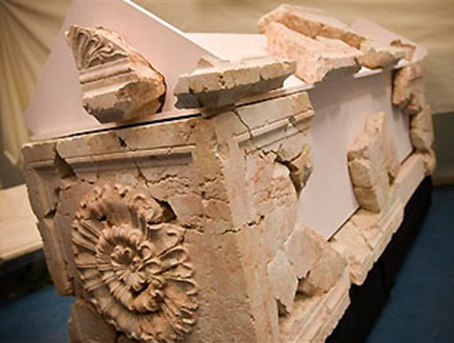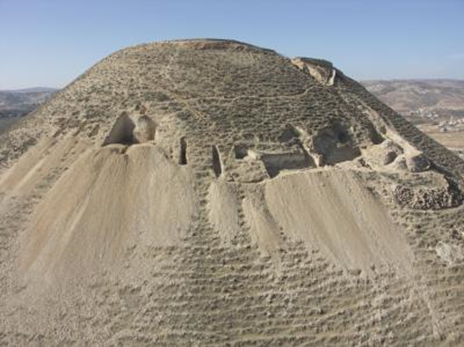Introduction
The 2021 Australian Community Survey asked a representative sample of Australians, “Which of the following statements best reflects your understanding of Jesus Christ?” 22 per cent agreed that “Jesus is a mythical or fictional character”; 29 per cent said they “Don’t know” if Jesus lived; and just 49 per cent affirmed that “Jesus was a real person who actually lived.”[1]
Unfortunately, people’s opinion about Jesus is mainly based on ignorance. There are many people and places mentioned in the gospels that are associated with Jesus’ ministry. Over the years many of these people, places and events have been verified, particularly by archaeology. All of which provides powerful evidence for the authenticity of Jesus’ earthly ministry. Some examples are given below.
The People
Caesar Augustus
Luke 2:1-4
In those days Caesar Augustus issued a decree that a census should be taken of the entire Roman world. (This was the first census that took place while Quirinius was governor of Syria.) And everyone went to his own town to register. So Joseph also went up from the town of Nazareth in Galilee to Judea, to Bethlehem the town of David, because he belonged to the house and line of David.
Caesar Augustus was a real person who lived and reigned at the time of Jesus’ birth. The following is an extract from the Encyclopedia Brittania, Caesar Augustus, or Octavian orig. Gaius Octavius later Gaius Julius Caesar Octavianus, (born Sept. 23, 63 BC—died Aug. 19, AD14, Nola, near Naples), First Roman emperor.
This statement is in complete agreement with the Bible.
Caiaphas the High Priest
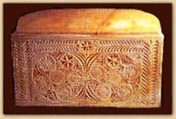 It was Caiaphas who pronounced judgement on Jesus in His first of six trials as stated in Matthew’s gospel
It was Caiaphas who pronounced judgement on Jesus in His first of six trials as stated in Matthew’s gospel
Those who had arrested Jesus took him to Caiaphas the high priest, where the teachers of the law and the elders had assembled.[2]
Caiaphas was high priest for 18 years (AD 18–36). It is probable that he gained the position by marrying the daughter of Annas, head of a powerful high-priestly clan.[3] Caiaphas is infamous as the leader of the conspiracy to crucify Jesus. Dr Zvi Greenhut of the Israel Museum discovered his ossuary, pictured, (a box for storing the bones of the dead) in November 1990.
Pontious Pilate
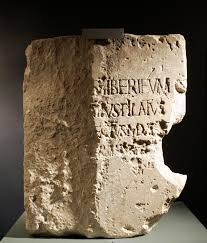 Pontious Pilate played the most significant part in world history; he sentenced Jesus of Nazareth to death by crucifixion as recorded in Matthew’s gospel (27:15-26). However, there have never been any solid archaeological findings that confirmed he existed. As well, the records of his administration had disappeared completely: no papyri, no rolls, no tablets. The Roman ruins that remained in Israel seemed to have nothing to do with him only the Bible attests to him and many doubted the Bible. However, in 1961 the Italian archaeologist, Dr Frova uncovered a limestone block while he was excavating an ancient theatre near Caesarea Maritima. Although the inscription had been partially removed, enough remained of its Latin writing, which when translated, read; Pontius Pilate, Prefect of Judea, exactly how the gospel writer Matthew described him.
Pontious Pilate played the most significant part in world history; he sentenced Jesus of Nazareth to death by crucifixion as recorded in Matthew’s gospel (27:15-26). However, there have never been any solid archaeological findings that confirmed he existed. As well, the records of his administration had disappeared completely: no papyri, no rolls, no tablets. The Roman ruins that remained in Israel seemed to have nothing to do with him only the Bible attests to him and many doubted the Bible. However, in 1961 the Italian archaeologist, Dr Frova uncovered a limestone block while he was excavating an ancient theatre near Caesarea Maritima. Although the inscription had been partially removed, enough remained of its Latin writing, which when translated, read; Pontius Pilate, Prefect of Judea, exactly how the gospel writer Matthew described him.
King Herrod
Pilate sent Jesus to Herrod for judgement because he did not want to judge Him himself. Luke (23:8-9) records,
When Herod saw Jesus, he was greatly pleased, because for a long time he had been wanting to see him. From what he had heard about him, he hoped to see him perform a sign of some sort. He plied him with many questions, but Jesus gave him no answer.
In May 2007, Professor Ehud Netzer announced that a team of archaeologists from the Hebrew University in Jerusalem had discovered the remains of the sarcophagus and mausoleum of Herod the Great, near the top of Mount Herodium, the cone-shaped hill he created.[4]
The photographs are of Mount Herodium (a Hebrew University of Jerusalem photograph) and of what is almost certainly Herrod’s sarcophagus.
The Places
First century Jewish synagogue
The Bible mentions Jesus preaching in Jewish synagogues and particularly in Galilee:
Going from place to place, he went into their synagogue, Matthew 12:9
Coming to his hometown, he began teaching the people in their synagogue. Matthew 13:54
They went to Capernaum, and when the Sabbath came, Jesus went into the synagogue and began to teach. Mark 1:21
Another time he went into the synagogue. Mark 3:1
He was teaching in their synagogues, and everyone praised him. He went to Nazareth, where he had been brought up, and on the Sabbath day he went into the synagogue, as was his custom. Luke 4:15-16
On another Sabbath, he went into the synagogue and was teaching. Luke 6:6
He said this while teaching in the synagogue in Capernaum. John 6:59
In all, there are over 70 references to synagogues recorded in the New Testament.
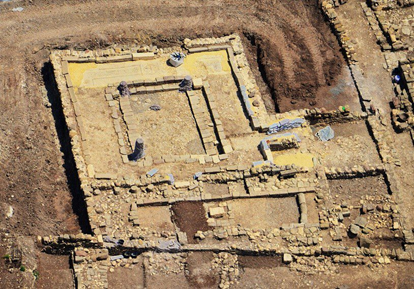 The problem is that there had been no first century synagogues found. Journalist, Greg Sheridan writes; Before 2008, some scholars held that there had been no synagogues in the Galilee area during Jesus’ time. Until then, there had been no conclusive archaeological evidence of a Galilee synagogue in Jesus’ time. They even went on to state that the gospels must have been written at a much later time.[5]
The problem is that there had been no first century synagogues found. Journalist, Greg Sheridan writes; Before 2008, some scholars held that there had been no synagogues in the Galilee area during Jesus’ time. Until then, there had been no conclusive archaeological evidence of a Galilee synagogue in Jesus’ time. They even went on to state that the gospels must have been written at a much later time.[5]
A synagogue was discovered in 2009 during a salvage dig conducted and announced by Dr. Dina Avshalom-Gorni of the Israel Antiquities Authority (IAA) at the site of ancient Magdala in Galilee. The IAA reported that the synagogue was used from 50 BC to AD 100.[6] The image of it is courtesy of Wikimedia commons.
On December 12, 2021, the IAA announced the discovery of a second, first century synagogue in Magdala, and it was only 100 metres from the first discovery.
The Pool of Siloam
The Pool of Siloam was built by King Hezekiah who reigned from 715- 686 BC. It is mentioned three times in the Bible; Nehemiah 3:15, Isaiah 8:6 and John 9:6-7. The Hebrew word Siloam means “sent.” John’s gospel (9:7) records Jesus healing a blind man by rubbing mud in his eyes and telling him to wash his eyes in the Pool of Siloam, which he did and after which, he could see. In a way, Jesus “sent” the man to the pool.
Liberal scholars have claimed that the Pool of Siloam never existed, and that John’s gospel was pure allegory; the pool normally referred to by that name was built by 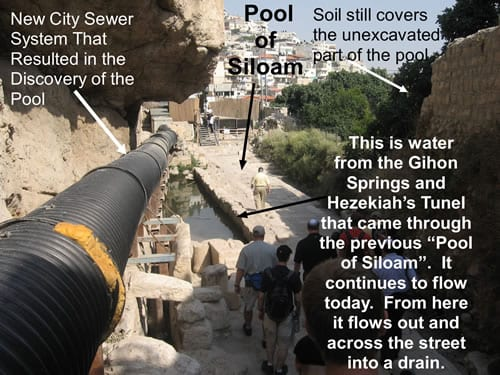 Eudocia of Constantinople (AD 400–460) and could not have been the pool of Jesus’ time. This liberal line of thinking was shown to be wrong in 2004, when a repair team, excavating a damaged sewer, uncovered two rows of stone steps. Subsequent excavation was by archeologists Eli Shukron who was working for the Israel Antiquities Authority.
Eudocia of Constantinople (AD 400–460) and could not have been the pool of Jesus’ time. This liberal line of thinking was shown to be wrong in 2004, when a repair team, excavating a damaged sewer, uncovered two rows of stone steps. Subsequent excavation was by archeologists Eli Shukron who was working for the Israel Antiquities Authority.
For more information see my article here.
The Pool of Bethesda
John 5:1-9
Some time later, Jesus went up to Jerusalem for one of the Jewish festivals. Now there is in Jerusalem near the Sheep Gate a pool, which in Aramaic is called Bethesda and which is surrounded by five covered colonnades. Here a great number of disabled people used to lie—the blind, the lame, the paralyzed. One who was there had been an invalid for thirty-eight years. When Jesus saw him lying there and learned that he had been in this condition for a long time, he asked him, “Do you want to get well?”
“Sir,” the invalid replied, “I have no one to help me into the pool when the water is stirred. While I am trying to get in, someone else goes down ahead of me.”
Then Jesus said to him, “Get up! Pick up your mat and walk.” At once the man was cured; he picked up his mat and walked.
This passage tells of Jesus healing a lame man by the Pool of Bethesda. Excavations in the late 1800s uncovered such a pool, with remains that indicate it had several porches (porticoes), twin pool areas, and was fed by underground water and lock gate system, which would result in the water being disturbed on occasion. Eusebius mentioned the Sheep Pool in the fourth century; this most likely refers to the Pool of Bethesda. Today, the pool may be visited at the site of the Church of Saint Anne.[7]
Jacob’s Well
This site played an important part in Jesus’ ministry as it was at Jacob’s well where He met a Samaritan woman and showed Himself to be the Messiah as recorded in John’s gospel 4:4-26.
Now he had to go through Samaria. 5 So he came to a town in Samaria called Sychar, near the plot of ground Jacob had given to his son Joseph. 6 Jacob’s well was there, and Jesus, tired as he was from the journey, sat down by the well. It was about noon.
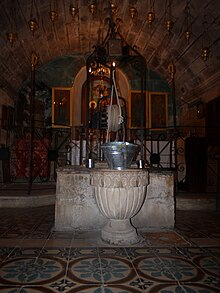 7 When a Samaritan woman came to draw water, Jesus said to her, “Will you give me a drink?” 8 (His disciples had gone into the town to buy food.)
7 When a Samaritan woman came to draw water, Jesus said to her, “Will you give me a drink?” 8 (His disciples had gone into the town to buy food.)
9 The Samaritan woman said to him, “You are a Jew and I am a Samaritan woman. How can you ask me for a drink?” (For Jews do not associate with Samaritans.
Today a modern orthodox church stands on the traditional site of Jacob’s Well in Nablus. Identified with Jacob by the early fourth century AD, the deep ancient well was once covered by a cut-stone vault, with a fourth century cruciform Byzantine church commemorating the site. The location is approximately 0.5 Km southeast of the Old Testament Shechem.
The Mount of Olives
Luke 22:39-40.
Jesus went out as usual to the Mount of Olives, and his disciples followed him. On reaching the place, he said to them, “Pray that you will not fall into temptation.”
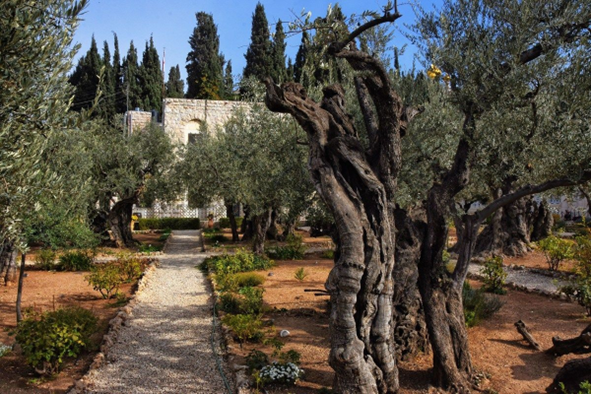 Almost all tourists to Israel visit the Mount of Olives and observe very old, possibly 2,000 years old, fig trees. Clearly, this is the place where Jesus went to pray and where He was betrayed by Judas and arrested.
Almost all tourists to Israel visit the Mount of Olives and observe very old, possibly 2,000 years old, fig trees. Clearly, this is the place where Jesus went to pray and where He was betrayed by Judas and arrested.
Caesarea Philippi
Matthew 16:13-16.
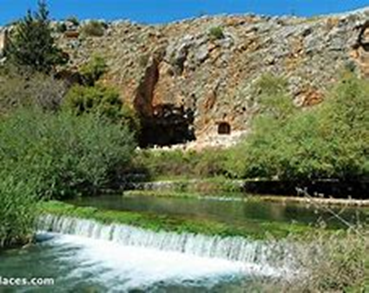 When Jesus came to the region of Caesarea Philippi, he asked his disciples, “Who do people say the Son of Man is?” They replied, “Some say John the Baptist; others say Elijah; and still others, Jeremiah or one of the prophets.”
When Jesus came to the region of Caesarea Philippi, he asked his disciples, “Who do people say the Son of Man is?” They replied, “Some say John the Baptist; others say Elijah; and still others, Jeremiah or one of the prophets.”
“But what about you?” he asked. “Who do you say I am?” Simon Peter answered, “You are the Christ, the Son of the living God.” Jesus replied, “Blessed are you, Simon son of Jonah, for this was not revealed to you by flesh and blood, but by my Father in heaven.
Caesarea Philippi is a location in the Bible that is mentioned in the first two Gospels, Matthew and Mark. It is located northeast of the city of Dan, near the slopes of Mount Hermon and it is the source of the Jordan River. The city was originally named Paneas but was later renamed Caesarea Philippi in honor of Tiberias Caesar and Philip the Tetrarch. The city was known for the Cave of Pan, the place of the pagan Gate of Hades
As stated above, Caesarea Philippi is a real place, and it is a major tourist’s attraction.
The Events
A first century fishing boat
Peter, James and John had two fishing boats. Jesus used one of the boats to take him and his twelve disciples to the other side of the Sea of Galilee (Matthew 8:23-27, 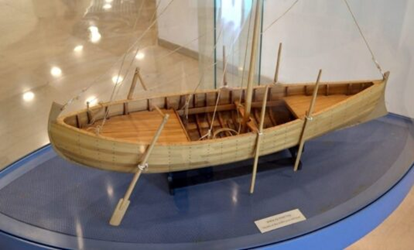 14:22-23), so the boat must have been large enough to take thirteen men. A boat from that period, which became known as the Jesus Boat, was discovered by two brothers, Moshe and Yuval Lufan in 1986, who went to the Sea of Galilee in search of artefacts at the time of a severe drought which caused the shoreline to recede greatly.
14:22-23), so the boat must have been large enough to take thirteen men. A boat from that period, which became known as the Jesus Boat, was discovered by two brothers, Moshe and Yuval Lufan in 1986, who went to the Sea of Galilee in search of artefacts at the time of a severe drought which caused the shoreline to recede greatly.
The Israel Antiquities Authority spent 12 days clearing away the mud, until they uncovered the remarkably well-preserved 2,000-year-old boat. The boat had a flat bottom which would have allowed it to float in shallow waters close to the shore while fishing. It measures 8.3 metres (27-foot) long by 2.3 metres (7.5-foot) wide and 1.3 metres (4.3 feet) high and four men would have served as rowers, and a mast would have allowed them to sail. It was large enough to hold 13 men as Jesus and His twelve disciples frequently sailed across the Sea of Galilee. The original boat is on display in the Yigal Alon Museum in Kibbut Ginosar, Israel. Along with a model of what it would have looked like. For more information, see my article here
Evidence of crucifixion
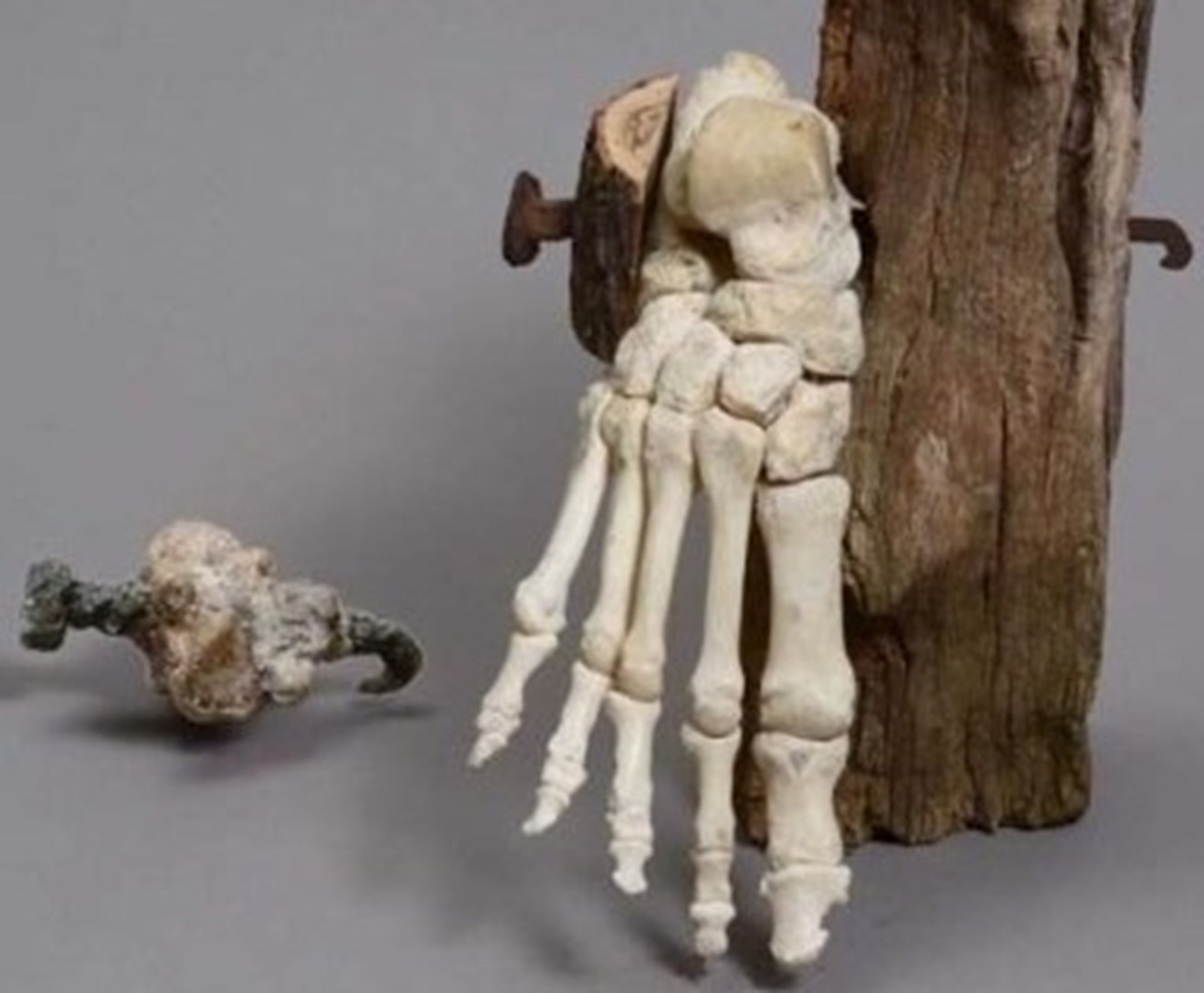 For the victim to breathe whilst hanging on the cross, thereby greatly extending the period of suffering and humiliation because the victim was naked, a nail or nails were driven through the feet. In 1968, an ossuary (bone-box) was discovered containing the skeletal remains of a man who had been crucified. They were found in a burial cave at Giv’at ha-Mivtar, northeast of Jerusalem. Evidence of crucifixion was in the form of a large nail, still in the heel bone (calcaneus). The nail was still in place because it had bent when driven through his ankle. The remains of an olive wood plank placed on his foot prior to the nail being driven in were found also, evidently acting as a ‘washer’ to prevent the victim from pulling his foot off the spike. With this mode of securing the feet, both feet would be nailed separately on either side of the crucifixion pole as shown in the photograph.
For the victim to breathe whilst hanging on the cross, thereby greatly extending the period of suffering and humiliation because the victim was naked, a nail or nails were driven through the feet. In 1968, an ossuary (bone-box) was discovered containing the skeletal remains of a man who had been crucified. They were found in a burial cave at Giv’at ha-Mivtar, northeast of Jerusalem. Evidence of crucifixion was in the form of a large nail, still in the heel bone (calcaneus). The nail was still in place because it had bent when driven through his ankle. The remains of an olive wood plank placed on his foot prior to the nail being driven in were found also, evidently acting as a ‘washer’ to prevent the victim from pulling his foot off the spike. With this mode of securing the feet, both feet would be nailed separately on either side of the crucifixion pole as shown in the photograph.
The towns
Apart from Jerusalem, Nazareth and Bethlehem, which are all well-known and are on our news many nights, Jesus visited several other towns as well. These have been substantiated mostly by archaeology and are: Bethsaida (Mark 8:22-25), Cana (John 2:11), Capernaum (Luke 4:31), Chorazin (Matthew 11:21-24), and Nain (Luke 7:11-17).
Conclusion
There have always been doubters of the authenticity of the Bible. It’s easy for people to make bland statements decrying the Bible, like “It contradicts itself,” “It is full of mistakes, “It is just a series of stories,” etc and Jesus’ earthly ministry is no exception. Absence of evidence is not evidence of absence. A good case in point is the Pool of Siloam. Liberal scholars have claimed that the Pool of Siloam never existed, and that John’s gospel was pure allegory. As mentioned above, the pool of John’s gospel was discovered in 2005 which put an end to talk of its non-existence. So, when a detailed examination is done, the Bible stands firm.
[1] https://www.abc.net.au/religion/john-dickson-why-historians-dont-doubt-jesus-existed/13687464.
[2] Matthew 26:27.
[3] John 18:13.
[4] israelnationalnews.com, retrieved December 1, 2008.
[5] Greg Sheridan, The Weekend Australian, December 18-19, 2021, Inquirer, page 20.
[6] https://en.wikipedia.org/wiki/Migdal_Synagogue.
[7] Joseph M Holden Norman Geisler, The Popular Handbook of Archaeology and the Bible, Harvest House Publishers, 2013, page 363.
